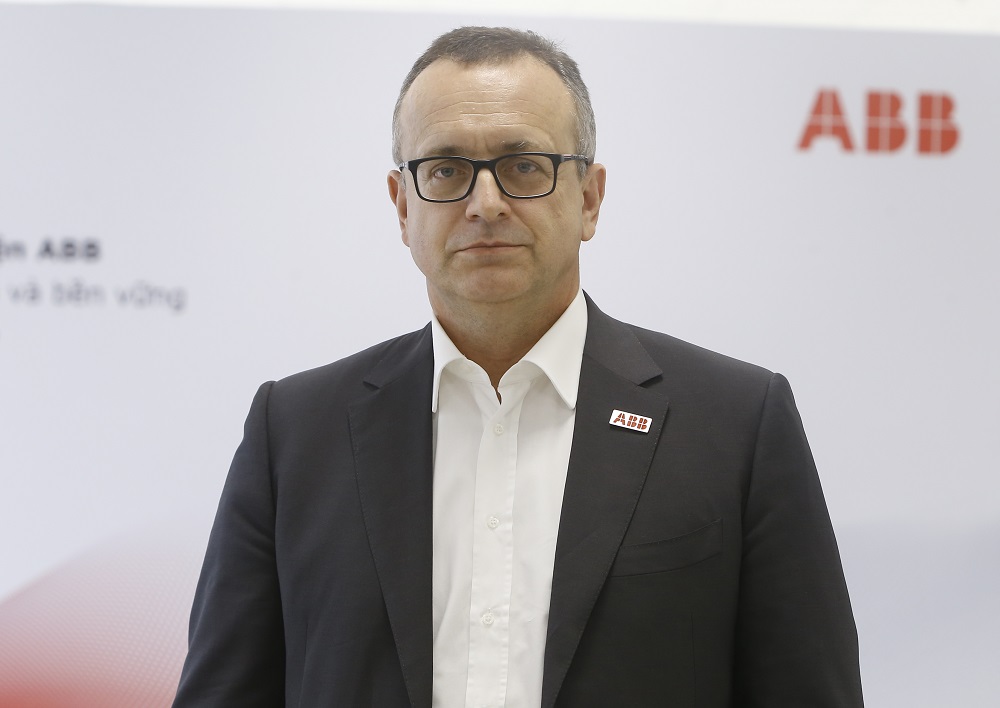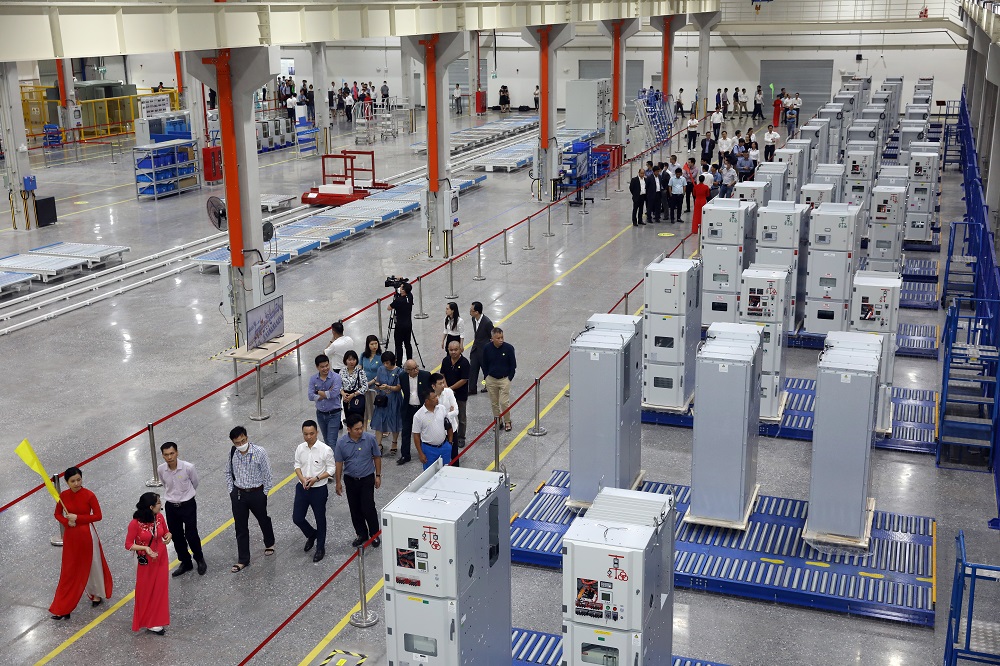A smart grid for the energy transition
2022 is the year we act on our net zero pledges in 2021, and no climate action is more urgent than completing the energy transition. Mr. Alessandro Palin, President of ABB’s Distribution Solutions division, granted an interview for our report on this issue.

Mr. Alessandro Palin, President of ABB’s Distribution Solutions division
How important is the new ABB Electrification Distribution Solutions Factory to ABB's strategy in the region?
The new ABB Electrification Distribution Solutions Factory is important locally and regionally as we see solid growth and potential. It complements our manufacturing in India and China, creating capacity to meet growing new demands.
This factory is built on our track record in Vietnam where we invested progressively over the years and saw the potential. As Vietnam continues to develop its manufacturing capabilities to become a formidable economic powerhouse for the region and beyond, we see that it will remain an attractive investment destination for us as long as the need for distribution solutions remains.
Urbanization, EVs and renewables present new demand and supply dynamics, hence the need for distribution solutions. We are implementing this not only in Vietnam, but also across the region, where policy makers, partners, and customers are working to ensure a resilient and flexible infrastructure for the future.
What main sectors/fields will the ELDS factory serve?
Solutions built at the factory will meet the growing need for electrification across the region and our key segments, be it in traditional utilities, or beyond in industries, transport and infrastructure. We are particularly excited about how our products will complement the growth and adoption of renewables, electric vehicle charging and data centres.
What is your view of the energy transition?
The grid should not be the limit ing factor in our green ambitions for future generations. The greatest risk and cost to all our efforts, whether on a regional, national or individual level, whether it is renewables, buildings, transportation or energy efficiency, is actually failing to keep up with distribution grid investments. We need to scale up and accelerate that understanding and stimulate investment. At this point in the energy transition, over-investment is not a risk, but an immense opportunity.
Hitting emissions targets and achieving a carbon neutral world is ambitious but absolutely achievable. Much has been done with higher targets on GHG emission reduction, renewable energies, energy efficiency, electrification of transport and the efficiency of buildings. Expanding the direct electrification of economies can potentially deliver significant reductions in greenhouse gas emissions as well as transform systems by creating demand-side flexibility models and bringing greater system efficiencies.
In the case of the grids, direct electrification means physically expanding the infrastructure to handle bigger loads and extensively deploying innovative smart grid technologies to free the flow of data and allow monitoring and control of the operations.
However, we will only reap the benefits of greater direct electrification if our grids are up to the task – and now is the time to scale up and accelerate that understanding and stimulate investment.

ABB Electrification Distribution Solutions Factory
How important is the concept of a smart grid to the energy transition?
We have eight years to cut global emissions in half. Without the smart grid, there would be no energy transition.
The International Energy Agency (IEA) cites grid integration as one of the top 4 challenges to increasing renewable energy capacity, alongside non-technical challenges (financial, permissions, and social acceptance). From now to 2026, renewables could grow 60% faster than in the past five years, thanks to net zero commitments in 137 countries, and the maturity of wind and solar generation. But we will need smart grids to make that happen. Smart grids perform four tasks critical to the energy transition. They boost grid resilience, increase renewable energy integration, drive down costs, and enable universal access to clean electricity.
The resilience of the grid is critical – clean electricity fails if we can’t use it. We all know the grid was built for a steady supply of combustion-based energy, but solar and wind are variable. When they are not producing, the grid draws on fossil fuels as a backup.
In fact, the International Renewable Energy Agency also recommends smart grids for developing countries, to help them support rising electricity demand with renewable energy, while also generating new avenues of economic growth. Universal accessibility to clean electricity is central to a successful energy transition. Emissions are border-free, and we need to make sure that anywhere people are cooking, heating, cooling, driving, etc., they are using safe, smart, sustainable electricity.
Are there any breakthrough technologies that will help customers significantly reduce emissions?
Electrification, alternative fuel sources, the future mobility vision, there are a myriad of opportunities that exist to help us drive down energy use and achieve our net zero future.
However, it isn’t always simple. The rapid uptake of renewables like wind and solar that we see across the world, for example, is just one part of the solution - and indeed presents another set of challenges to our electrical grids.
Switchgear is the backbone of electricity grids. As renewable sources of power are more dispersed and distributed, we need more connections to the grid, and thus more compact gas insulated switchgear (GIS) is needed to ensure safe operations.
Because of its excellent insulation and current interruption properties, sulfur hexafluoride (SF6) is commonly used in gas insulated switchgear; in fact, the electrical power industry consumes 80 percent of all SF6 produced worldwide.
Yet SF6 is the world’s most potent greenhouse gas with an incredibly high global warming potential (23,500 times that of CO2) and its concentration in the atmosphere is increasing. Therefore, it is crucial that the world adopt an alternative to meet the rapid rate of electrification—and quickly.
In 2015, ABB marked a new chapter in our SF6-free future with the introduction of the first in a range of eco-efficient gas insulated switchgear options designed to ensure maximized safety and highest reliability-while reducing global warming impact by up to 100 percent.
Fast forward 7 years, and our ecoGIS portfolio continues to break new ground in helping utilities, industries, and infrastructure customers make the transition to SF6-free technology and significantly reduce their carbon footprints in energy distribution. More recently, we launched PrimeGear™ ZX0 - the world’s first switchgear that allows customers to switch to a green insulation gas – and go SF6-free - at any point in the switchgear’s lifetime.








